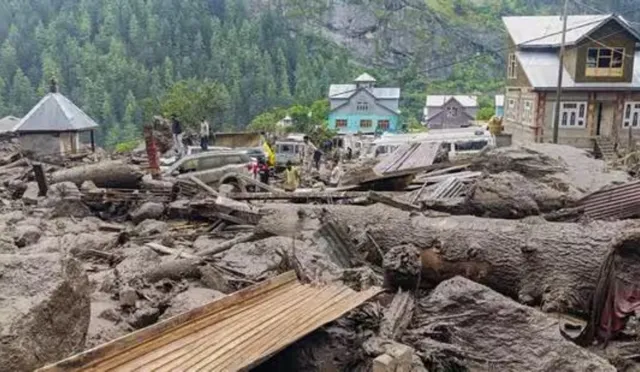- By Shubham Bajpai
- Sun, 17 Aug 2025 05:19 PM (IST)
- Source:JND
Jammu and Kashmir Cloudbursts: The southwest monsoon brought misery and devastation for the north Indian hilly states, including Jammu and Kashmir, where more than 70 people lost their lives in the cloudbursts within a week.
At first, the cloudburst hit Chasoti in Kishtwar on August 14, where 65 people died and 100 were injured, and then on the intervening night of Saturday and Sunday, seven people died in two other cloudbursts in Kathua's Jodh Ghati village of Rajbagh and Janglote.
What is a cloudburst?
A cloudburst is rainfall that is sudden, extreme, and intense, occurring over a small area for a short period of time. It's because of this characteristic of the cloudburst that it triggers landslides and flash floods.
ALSO READ: Kathua Cloudburst: 7 Dead, Multiple Injured After Flash Floods Hit Janglote; Rescue Ops Underway
It usually occurs for s short period of time but can expand to over an hour, bringing more devastation with passing time.
What makes it more dangerous?
The intensity of the rainfall in a cloudburst is 100 mm per hour or more. It is caused when the clouds do not precipitate gradually but abruptly affecting a small but a few kilometres of area.
Considering the least intensity of 100 mm of rainfall, it amounts to 100 million litres of water falling in just an hour over an area of 1 square kilometre. With a rise in either the intensity or the area, the amount of water rises. For instance, a 200 mm rainfall over 10 square km area would amount to 2 billion litres of downpour in an hour.
ALSO READ: Kishtwar Cloudburst: Death Toll Rises To 65, Rescue Operations Continue Despite Bad Weather
The water with such intensity and amount in a short period of time is sufficient to cause unimaginable, quick and massive destruction in the affected areas.
On top of that, the cloudburst happens mostly in mountainous regions, which deteriorates the condition even more as slopes intensify run off to wash out the houses, people, and cattle, among other valuables on the hillside.

